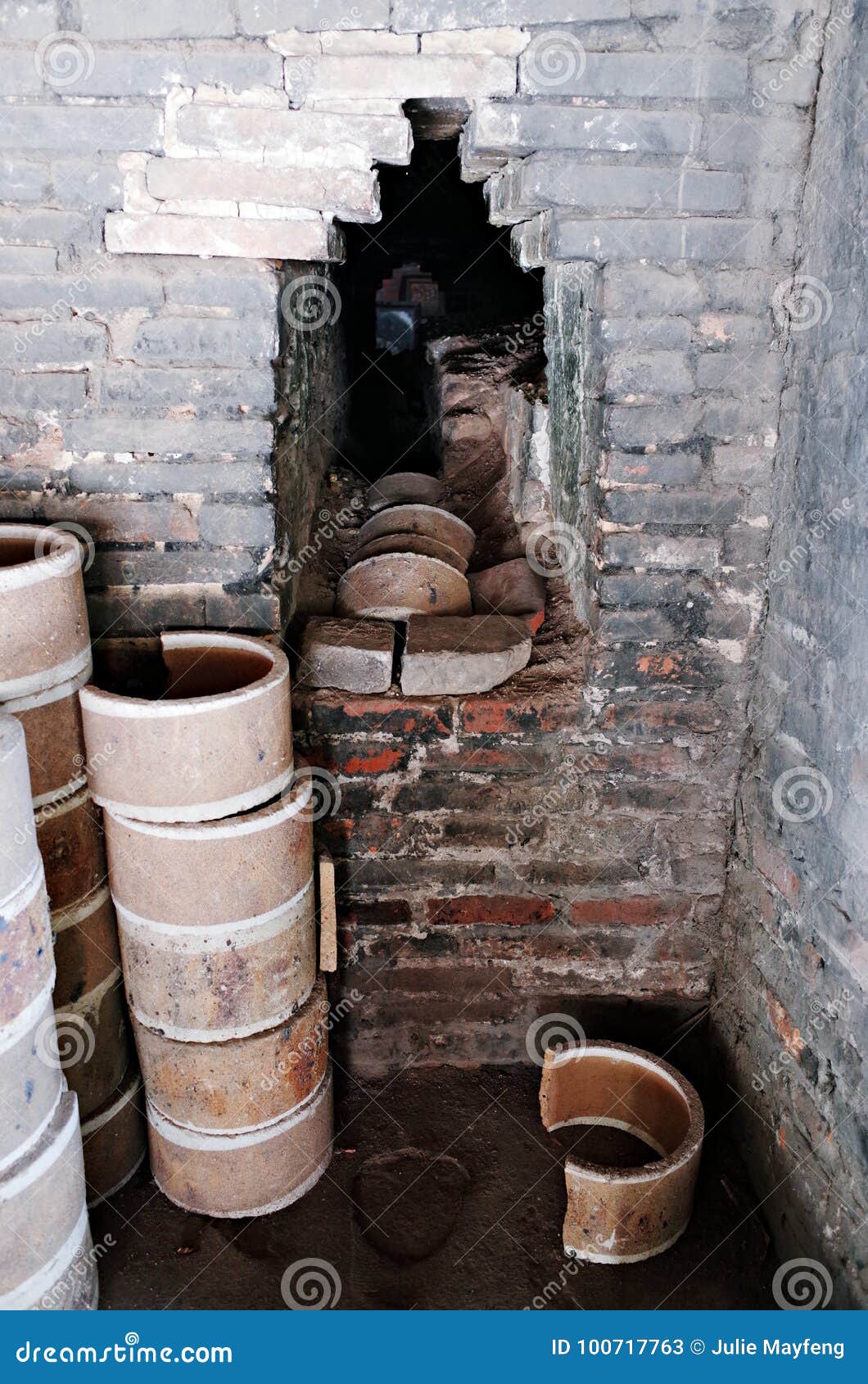News
Trace the Journey of Bat Trang Ceramics Through Time
Bat Trang ceramics have stood as a symbol of Vietnamese artistry and cultural heritage for centuries. Renowned for their exquisite craftsmanship, unique designs, and enduring quality, these ceramics represent not just functional items but also a profound artistic tradition that has evolved over time. In this article, we will trace the fascinating journey of Bat Trang ceramics through history, exploring their origins, development, influence, and modern significance.
Origins and Early Development of Bat Trang Ceramics

The story of Bat Trang ceramics begins in a small village located near Hanoi, Vietnam. Known for its rich clay deposits, Bat Trang became a natural hub for pottery-making, eventually growing into one of the most famous ceramic villages in Asia.
This section delves into the beginnings of Bat Trang ceramics, examining the environmental, social, and cultural factors that contributed to its rise.
Before we explore the sub-topics, it is essential to recognize that the early development of Bat Trang ceramics was deeply intertwined with Vietnam’s historical context and the availability of natural resources that shaped its unique characteristics.
The Geographic and Environmental Foundations
The location of Bat Trang village played a crucial role in shaping its ceramic industry. Nestled along the banks of the Red River, the village had access to high-quality white clay as well as ample water supply, both vital ingredients for pottery production.
The white clay of Bat Trang is notable for its purity and plasticity, allowing potters to mold intricate shapes and produce fine-glazed surfaces. This natural advantage laid the groundwork for the village’s reputation.
Moreover, the surrounding environment provided abundant fuel sources such as wood and rice husks, which were historically used to fire kilns. This accessibility made large-scale ceramic production feasible.
Historical Context and Early Influences
Bat Trang’s ceramic tradition dates back more than 700 years, reaching prominence during the Ly (11th–13th century) and Tran (13th–14th century) dynasties. During these periods, the demand for ceramics increased due to population growth and expanding trade networks.
Early Bat Trang ceramics exhibited influences from Chinese pottery styles, brought by trade routes and cultural exchanges. However, local artisans quickly adapted these techniques, infusing indigenous motifs and methods that reflected Vietnamese aesthetics.
Temples, royal courts, and everyday households all became patrons of Bat Trang ceramics, encouraging innovation and diversity in production.
Techniques and Styles of Early Bat Trang Pottery
In the initial phases, Bat Trang potters focused on utilitarian wares such as bowls, jars, and plates. The primary techniques included hand-shaping and wheel-throwing, followed by glazing and firing.
The distinction of Bat Trang ceramics came from the characteristic white glaze accompanied by blue or brown painted decorations—typically floral or geometric patterns.
The firing process used traditional wood-fired kilns, which imparted a distinctive finish and occasional variations in color, adding to the uniqueness of each piece.
Craftsmen also experimented with various glaze formulas to achieve a smooth, durable surface that resisted wear and enhanced visual appeal.
The Flourishing Period: Bat Trang Ceramics in the Dynastic Era

As Bat Trang ceramics matured, they reached their artistic zenith during later Vietnamese dynasties, notably the Le (15th–18th century) and Nguyen (19th century) periods. This era witnessed notable advancements in both style and production scale.
In this section, we examine how Bat Trang ceramics flourished under royal patronage, expanded trade, and evolving artistic trends.
Understanding this period is key to appreciating the legacy of Bat Trang ceramics and their continued cultural importance.
Royal Patronage and Artistic Innovation
During the Le dynasty, Bat Trang ceramics gained official recognition as prestigious art forms serving royal courts and religious institutions. The emperors commissioned elaborate ceramic works for palace decoration, altar use, and ceremonial purposes.
This patronage spurred innovation in design complexity and technical mastery. Artisans introduced new motifs inspired by Buddhist and Taoist iconography, incorporating dragons, phoenixes, lotuses, and auspicious symbols.
The use of refined painting techniques enabled more detailed and vibrant imagery, often executed in cobalt blue underglaze—a hallmark of Vietnamese ceramics.
Furthermore, craftsmen began producing larger and more diverse shapes, including vases, tea sets, and incense burners, catering to varied tastes and functions.
Expansion of Trade Networks
By the 16th century, Bat Trang ceramics had attracted attention beyond Vietnam, becoming coveted export goods to China, Japan, Southeast Asia, and even Europe via maritime trade routes.
The village’s proximity to major rivers facilitated transportation, allowing products to reach international markets efficiently.
Foreign buyers admired the aesthetic quality and durability of Bat Trang wares, often comparing them favorably to Chinese porcelain.
This cross-cultural exchange influenced Bat Trang artisans further, who adopted some foreign design elements while preserving distinct Vietnamese characteristics.
Trade also stimulated economic growth in Bat Trang, enabling the village to support skilled artisans and invest in improved kiln technology.
Mastery of Technical Craftsmanship
The dynastic era saw significant improvements in kiln design and firing techniques. Traditional dragon kilns gave way to more controlled multi-chambered structures, allowing higher temperatures and better heat distribution.
These advances resulted in stronger, finer ceramics with more consistent glaze finishes.
Artisans perfected the underglaze painting method, mastering brushwork that conveyed both precision and fluidity.
Moreover, the introduction of celadon glazes added new visual dimensions, blending greenish hues with classic white and blue tones.
Such technical refinements established Bat Trang ceramics as a benchmark of Vietnamese pottery excellence, admired for both beauty and functionality.
Decline and Revival: Bat Trang Ceramics in the Modern Era
The transition into the 20th century brought challenges to Bat Trang ceramics, as industrialization, wars, and changing consumer preferences impacted traditional crafts.
However, the story does not end here. This section explores the decline and subsequent revival of Bat Trang ceramics in contemporary times.
Recognizing these dynamics highlights the resilience of the craft and its capacity to adapt.
Impact of Industrialization and War
With the advent of industrial production methods and mass-produced ceramics, many traditional workshops in Bat Trang faced competition from cheaper imports.
The disruption caused by French colonialism and subsequent conflicts, including the Vietnam War, led to resource scarcity and loss of skilled artisans.
Many families abandoned pottery-making, resulting in a sharp decline in both quantity and quality of Bat Trang ceramics.
Additionally, urbanization shifted focus away from rural crafts, threatening the continuity of the ancient tradition.
Government and Community Efforts to Preserve Heritage
Starting in the late 20th century, Vietnamese authorities and cultural organizations recognized the value of Bat Trang ceramics as national heritage.
Programs were initiated to revive training programs for young artisans, preserve traditional kiln sites, and promote Bat Trang pottery domestically and internationally.
The village became a cultural tourism destination, attracting visitors eager to witness live demonstrations and purchase authentic handmade wares.
Artisans experimented with blending traditional styles with contemporary designs to reach broader markets.
These efforts helped restore pride in the craft and ensured transmission of knowledge to future generations.
Contemporary Innovations and Global Influence
Today, Bat Trang ceramics embody both tradition and modern creativity. Young artists incorporate new themes, colors, and techniques, responding to global tastes without forsaking cultural roots.
Collaborations with designers and brands have elevated Bat Trang ceramics onto international platforms such as art exhibitions and luxury home decor markets.
Environmental concerns have also prompted adoption of eco-friendly materials and energy-efficient kilns.
Through these adaptations, Bat Trang ceramics continue to thrive, demonstrating the enduring power of cultural heritage to evolve and inspire.
Artistic Characteristics and Symbolism of Bat Trang Ceramics
Beyond their historical journey, Bat Trang ceramics are celebrated for their artistic richness and symbolic meanings embedded in their designs.
This section analyzes the visual language, motifs, and cultural significance expressed through Bat Trang pottery.
Grasping these artistic aspects deepens appreciation for the craft’s intangible heritage.
Distinctive Aesthetic Features
Bat Trang ceramics are instantly recognizable for their pure white clay body and smooth, glossy glaze.
The classic blue-and-white painted decoration, achieved through cobalt oxide underglaze, creates striking contrasts that highlight intricate patterns.
Shapes tend to be elegant yet practical, balancing form and function—a testament to the artisans’ skill.
Common forms include tea sets, plates, jars, and figurines, each carefully proportioned.
The tactile quality of the ceramics invites close examination, with subtle texture variations revealing manual craftsmanship.
Cultural Motifs and Their Meanings
Traditional Bat Trang designs often draw upon Vietnamese folklore, nature, and spiritual beliefs.
Popular motifs include:
- Dragons symbolizing power and protection
- Phoenixes representing renewal and grace
- Lotus flowers denoting purity and enlightenment
- Fish indicating abundance and prosperity
These symbols are not mere decoration but convey wishes for good fortune, health, and happiness.
Religious themes, especially Buddhist iconography, frequently appear on ceremonial pieces, linking ceramics to ritual practices.
The Interplay of Utility and Artistry
One of the remarkable traits of Bat Trang ceramics is their dual role as both functional objects and artistic expressions.
Everyday household items maintain aesthetic appeal, elevating mundane activities like dining or tea drinking into culturally meaningful experiences.
This fusion reflects Vietnamese philosophy where beauty and utility coexist harmoniously.
Bat Trang artisans embrace this principle, ensuring that each item serves its purpose while narrating stories through form and decoration.
Bat Trang Ceramics in Contemporary Culture and Economy
In the 21st century, Bat Trang ceramics continue to contribute meaningfully to Vietnam’s cultural identity and economic vitality.
This final main section explores their current role in society, tourism, and commerce.
It also considers challenges and prospects for sustaining the craft in a rapidly changing world.
Cultural Tourism and Educational Initiatives
Bat Trang village has transformed into a vibrant cultural hub attracting tourists seeking authentic handicrafts and experiential learning.
Workshops and museums offer interactive sessions where visitors can observe potters at work or try making pottery themselves.
Festivals celebrating ceramic arts foster community pride and raise awareness of traditional skills.
Schools increasingly incorporate Bat Trang ceramics into curricula, emphasizing heritage conservation.
These educational efforts help nurture a new generation of enthusiasts and practitioners.
Economic Contributions and Market Trends
Bat Trang ceramics represent an important livelihood source for local families, supplementing agriculture with craft income.
Small businesses and cooperatives enable collective marketing and quality control.
Domestic demand remains strong, driven by cultural appreciation and gifting traditions.
International exports have grown, particularly to collectors and interior designers valuing handcrafted authenticity.
Market trends show increasing interest in eco-friendly and customized ceramic products, encouraging innovation.
Challenges and Future Directions
Despite successes, Bat Trang ceramics face pressures from mass production, intellectual property issues, and generational shifts.
Ensuring fair compensation for artisans and protecting traditional designs require coordinated policies.
Adaptation to digital marketing and e-commerce is critical to reaching younger consumers globally.
Ongoing research into sustainable materials and techniques will support environmental stewardship.
Ultimately, balancing preservation with modernization is key to the craft’s longevity.
Conclusion
The journey of Bat Trang ceramics through time reveals a rich tapestry of artistic mastery, cultural symbolism, and resilient tradition. From humble beginnings grounded in geographical advantages and ancient techniques, Bat Trang evolved into a flourishing center of craft excellence supported by royal patronage and expansive trade. Despite challenges posed by modernization and conflict, the village’s artisans have revived and reimagined their heritage, keeping the essence of Bat Trang ceramics alive in contemporary culture and economy. With their unique blend of functional beauty and meaningful symbolism, Bat Trang ceramics continue to embody the spirit of Vietnamese creativity, offering timeless connections between past and present.
